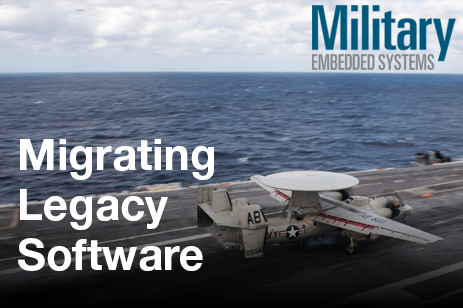
Published in Military Embedded Systems
Written by Denis Smetana
Virtualization software and model-based design provide a path that not only enables system designers to maintain legacy software for avionics and other mission-critical systems but also makes it possible to migrate that code to modern higher-performance processing platforms, for example from an older PowerPC-based VME board over to a new x86 or Arm-based VME or OpenVPX module.
For embedded defense and aerospace systems, the most expensive element is rarely the underlying hardware. Actually, the most costly part is the valuable application software that runs on the hardware. In many cases the hardware, whether the semiconductor devices such as the processor or the module form factor in use, will become obsolete long before the software running on that hardware loses its value. The challenge has been how to reliably and cost-effectively retain the investment in critical legacy software code when the life of the hardware it was originally designed to run on has come to an end.
Virtualization software can enable system designers to reap the advantages that enterprise virtualization and layers of cyber hardening bring to real-time embedded systems. Such an approach enables weapons systems to decouple software from specific hardware configurations and combat obsolescence. This approach makes it possible to protect older application software with contemporary cybersecurity protections that weren’t available when the code was first written. Northrop Grumman’s Real-time Virtualization And Modernized Protection (ReVAMP) software enables a secure enclave execution environment that delivers a layer of protection from outside threats. Secure boot and modern hardware-supported encryption are available once the legacy software runs in a ReVAMP virtual environment.